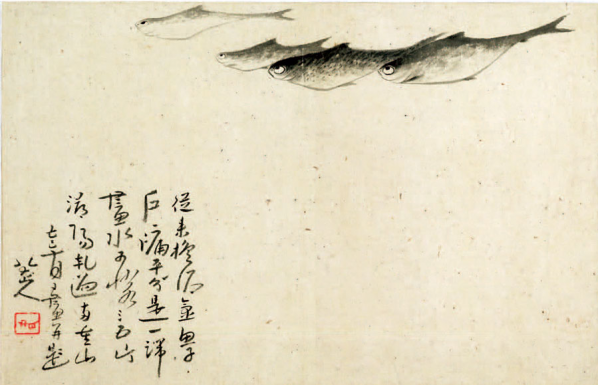
Zhang Feng(died 1662). Immortals' Secret in a Stone Cave(detail), 1658. Ink and color on paper, handscroll. Private collection.
The 17th century was one of the most dramatic and crisis-filled periods of China’s long history. Turbulent decades filled with droughts and floods, peasant uprisings, the corruption of powerful eunuchs at court, and foreign threats to national borders led to the collapse of the last native Chinese imperial dynasty, the Ming (1368–1644). This was followed by traumatic years of foreign conquest by the Manchus, who established the Qing dynasty (1644–1911). It was also an era of extraordinary artistic achievement. Curated by Peter C. Sturman and Susan Tai, this exhibition at? Asia Society and Museum will remain on view through June 2, 2013.
At the forefront of these historic changes were China’s educated elite, the scholar-officials known as literati (wenren), who managed the empire’s extensive governmental bureaucracy. These public servants — who had to pass rigorous exams in history, literature, and philosophy so they could hold office — were also some of China’s most accomplished poets, calligraphers, and painters. These arbiters of taste were threatened by both the politics of the 17th century as well as the rise of a merchant class seeking to join what the literati considered their own sophisticated social milieu.
The paintings in this exhibition offer a fascinating glimpse into the private world of these scholar-painters. Deeply affected by the crises of their times, many sought solace in the ancient ideal of withdrawal or reclusion. They retreated either literally or figuratively from serving a court filled with treacherous intrigue to private lives devoted to the time-honored consolations and pleasures found in nature, art, and learning.

Zhang Feng(died 1662). Immortals' Secret in a Stone Cave(detail), 1658. Ink and color on paper, handscroll. Private collection.

Xiang Shengmo(1959-1658). Summoning the Recluse(detail), 1625-1626. Ink on paper, handscroll ?2013 Museum AssociatesLACMA. Licensed by Art Resource, NY.
For these literati, reclusion could be an actual retreat into the mountains or often just a state of mind. They could pursue a life of reclusion on their own or within the company of other like-minded friends. Many of their paintings depict traditional Chinese imagery of journeys into vast landscapes or explorations of the natural world, but others are journeys of self-reflection, giving voice to personal thoughts and feelings in ways that are unprecedented in Chinese art.
As seen in the exhibition, the poems and texts that often accompany the paintings, written in masterful calligraphy, take us ever deeper into the private world of these “artful recluses.” Their response to the challenging times in which they lived can be seen in the alternate worlds they created in their art. These are worlds as subtle and elegant as those who created them, lofty realms of timeless beauty, intellect, and complex emotions.
About the exhibition
Duration: March 6-June 3, 2013
Venue: Asia Society and Museum
Add: 725 Park Avenue, New York, NY 10021
Tel: +212-288-6400
Courtesy of Asia Society and Museum, for further information please visit asiasociety.org.




























